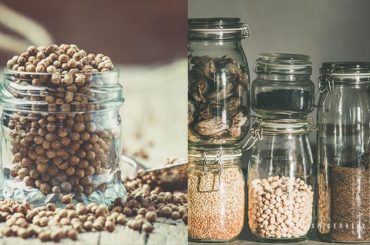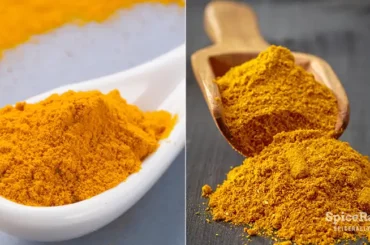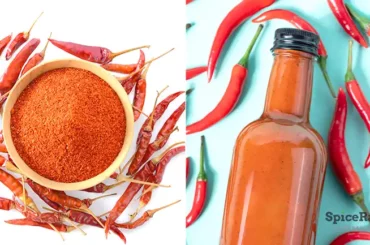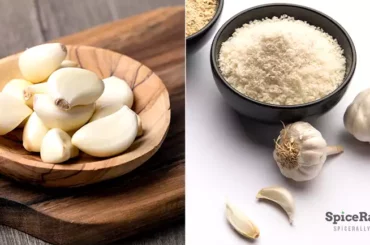MSG, also known as Monosodium Glutamate, is a common food ingredient we often see in seasoning blends, spice mixtures, canned foods, etc. But what this ingredient really is, and is it safe to consume? This article hopes to discuss this controversial subject.
MSG is a mixture of two common substances- sodium and glutamate. MSG imparts the “umami” flavor that helps to enhance the flavor of any dish. Many studies have been conducted to investigate the health impact of consuming MSG. Though older research says this ingredient is harmful to health, recent and modern research claims that moderate amounts of MSG will not negatively impact human health.
So, let’s plunge in to excavate the truth!
What MSG Actually Is?
MSG, short term for monosodium glutamate, is a combination of two common substances: sodium (which is well-established as a vital part of our diet) and glutamate (a very common amino acid which is known as glutamic acid found in numerous plant and animal proteins).
Glutamic acid is organically present in our bodies and many foods and food additives. This universal flavor-enhancing ingredient is mainly associated with Chinese, Japanese, Chinese-American, and other

Southeast Asian foods. MSG offers the iconic “umami” flavor. It is a bright, white color powder that resembles salt. MSG emerges naturally in many foods, such as cheeses and tomatoes.
People around the world have consumed glutamate-dense foods throughout history. For example, a traditional dish in the Asian community is a glutamate-rich seaweed broth. In 1908, a Japanese professor, Kikunae Ikeda, was able to withdraw glutamate from this broth and discovered that glutamate delivered a savory taste to the soup.
Professor Ikeda then filed a patent to make MSG, and commercial manufacturing started the following year. At present, instead of removing and concentrating MSG from seaweed broth, MSG is made by the fermentation of sugar beets, sugar cane, starch, or molasses. This fermentation procedure is equivalent to that used to make wine, vinegar, and yogurt.
But, When Does The Controversy About MSG Really Begin?
Everything started when Dr. Robert Ho Man Kwok felt sick after dinner at a Chinese restaurant in 1968. The doctor conveyed that he had noticed numbness and palpitations in his neck, arms, and back after he had eaten Chinese food.
He wrote a letter describing his symptoms to a prestigious medical journal. However, his letter contemplated that his symptoms may have been the impact of several dietary factors, including alcohol, sodium, and MSG.
Despite Kwok’s connection between his headaches and this common seasoning being just a sneaking suspicion, the relevant journal highlighted MSG as being the main cause of his health conditions. Henceforth his letter unexpectedly and dramatically revised the world’s relationship with MSG, rousing international panic, opinionated science, and shocking journalism for the next 40 years.
Consequences Of Kwok’s Letter…
So, when this letter was published, the rage was immediate. Researchers and the public solicited a scientific inquiry into this popular additive. Their request wasn’t certainly unreasonable since the substance hadn’t been experimented with for toxicity, and its health impacts were mostly unknown.
However, it’s likely many people weren’t reacting to the lack of food safety regulations. But rather did the title of Kwok’s letter: Chinese Restaurant Syndrome! While MSG was already used in numerous cuisines, many Americans had long-standing preconceptions against Asian eating customs labeling them as exotic or dangerous.
These stigmas provoked racially prejudiced journalists and extended dread that eating at Chinese restaurants could make you ill. This biased reporting outstretched numerous studies about MSG and umami. And the results were much less conclusive than the headline of the letter suggested.
Older Studies About MSG
A study conducted in 1969 found that injecting mice with MSG caused intense damage to their brain and retina. Thus some news platforms vaulted to disclose that eating MSG could cause brain damage. Likewise, some studies reported that excess glutamate could lead to conditions like Alzheimer’s.
These conditions were later discovered to be caused by internal glutamate imbalances, which are totally UNRELATED to MSG we eat. These headlines weren’t just an outcome of prejudiced reporters. But, throughout the last ’60s and early ’70s, many doctors also thought “Chinese Restaurant Syndrome” to be an admissible sickness.
What Happened With Modern Research Regarding MSG?
Thankfully, modern researchers have come up with better studies that challenge the unnecessary MSG hysteria rooted in our society. Accordingly, today’s research no longer sees this food additive in such a toxic way. Recent studies have demonstrated the crucial role glutamate plays in our metabolism. And some experts even believe that MSG is a more restorative alternative to added fat and sodium.
However, the research is still ongoing, and scientists still investigate whether regular consumption of MSG could be related to obesity. And it is possible that binging MSG provokes headaches, chest pains, or heart palpitations for some people. Consequently, the U.S. Food and Drug Administration considers the inclusion of MSG in foods to be “generally recognized as safe” when consumed in moderate amounts.
And as per FDA, a standard serving of food with added MSG possesses less than 0.5 grams of MSG. Consuming more than 3 grams of MSG (3/4 teaspoon) without food at one time (which is very unlikely) might cause complications in those who are sensitive to MSG.
However, the FDA further states that although many people determine themselves as sensitive to MSG, in studies with such people given MSG or a placebo, investigators have not been able to trigger comebacks consistently.
Similar Reads…
The Reason Why Most Products Display “No Added MSG” On Their Packagings.
The “No added MSG” phrase is not unfamiliar to us since we see this on the packaging of many commercial productions like seasoning blends, spice mixtures, instant noodles, canned foods, etc. But why do they really mention this even if MSG is still safe to be consumed moderately? Let us clear this out for you.
Although a few scientific experiments and clinical trials have tried to develop the idea that MSG does not do any harm to your health, the deeply rooted hysteria is still prevalent among most people. Above all, some people have even found themselves allergic or sensitive to produced monosodium glutamate.
And some try to evade flavor/ color additives and preservatives and stick to organic or natural products as much as possible. Thus, large to small-scale productions believe it is essential to mention “No added MSG” on their products.
What SpiceRally believe is that one should not consider that MSG-free products are good and that MSG-included products are harmful to your health. It is just a matter of choice; you can simply go for what you like and dodge what you don’t!
NOTE – Food with any ingredient that naturally contains MSG cannot assert “No MSG” or “No added MSG” on their packaging. MSG also cannot be listed as “spices and flavoring.
How Can You Know If There Is Msg In Your Food?
The FDA instructs that foods containing added MSG list it in the ingredient list on the packaging as “monosodium glutamate”. However, MSG occurs naturally in foods such as:
- Tomatoes
- Several types of cheeses (Parmesan, cheddar, Emmental)
- Kelp
- Seaweed
- Shitake mushroom
- Anchovies
- Green tea
- Cured ham
- Sardines
- Kimchi
- Clams
- Peas
- Potatoes
- Scallops
- Squid
- Oysters
- Shimeji mushroom
- Corn
- Autolyzed yeast
- Hydrolyzed vegetable protein
- Hydrolyzed yeast
- protein isolate (a variety of protein powder that has undergone more processing than a concentrate)
- Yeast extract
- Soy extracts
MSG can go by itself and many other synonymous names as well. They are:
- E number E621
- Monosodium glutamate
- Monosodium glutamate monohydrate
- Monosodium salt
- Monohydrate
- Monosodium L-glutamate monohydrate
- MSG monohydrate
- Sodium glutamate monohydrate
- UNII-W81N5U6R6U
- L-Glutamic acid
Other Common Foods That You Might Find Added MSG
- Seasoning blends
- Spice mixtures
- Instant noodles
- Chicken nuggets
- Burgers
- Fried chicken
- Bacon
- Sausages
- Lunch meats
- Smoked meat products
- Pastrami
- Hamburgers
- Cold cuts
- Pepperoni
- Salami
- Ketchup
- Mayonnaise
- Salad dressings
- Other creamy sauces
- Soy sauce
- Mustard
- Barbecue sauce
- Soup bases (bouillon cubes and granulated powders)
- Snacks, such as potato chips
- Bodybuilding protein powder
Final Thoughts On MSG From SpiceRally…
In essence, MSG or monosodium glutamate is a nontoxic food flavoring that will not cause any harm to your health when consumed in moderation. The FDA has proved this fact, while research on the severe adverse effects of MSG on human health is still ongoing.
However, it is universally known that too much of anything can cause negative health impacts; this is even applicable to water, which is considered the world’s healthiest beverage!
Therefore, based on all the facts and data we have collected so far, we believe that adding MSG to your diet (unless you are not allergic or sensitive to this ingredient) is a completely safe way to enhance the taste of your daily dishes. And there’s no need to have an “OMG! There’s MSG!” kind of feeling if you find this additive in any of the products you bring home!




